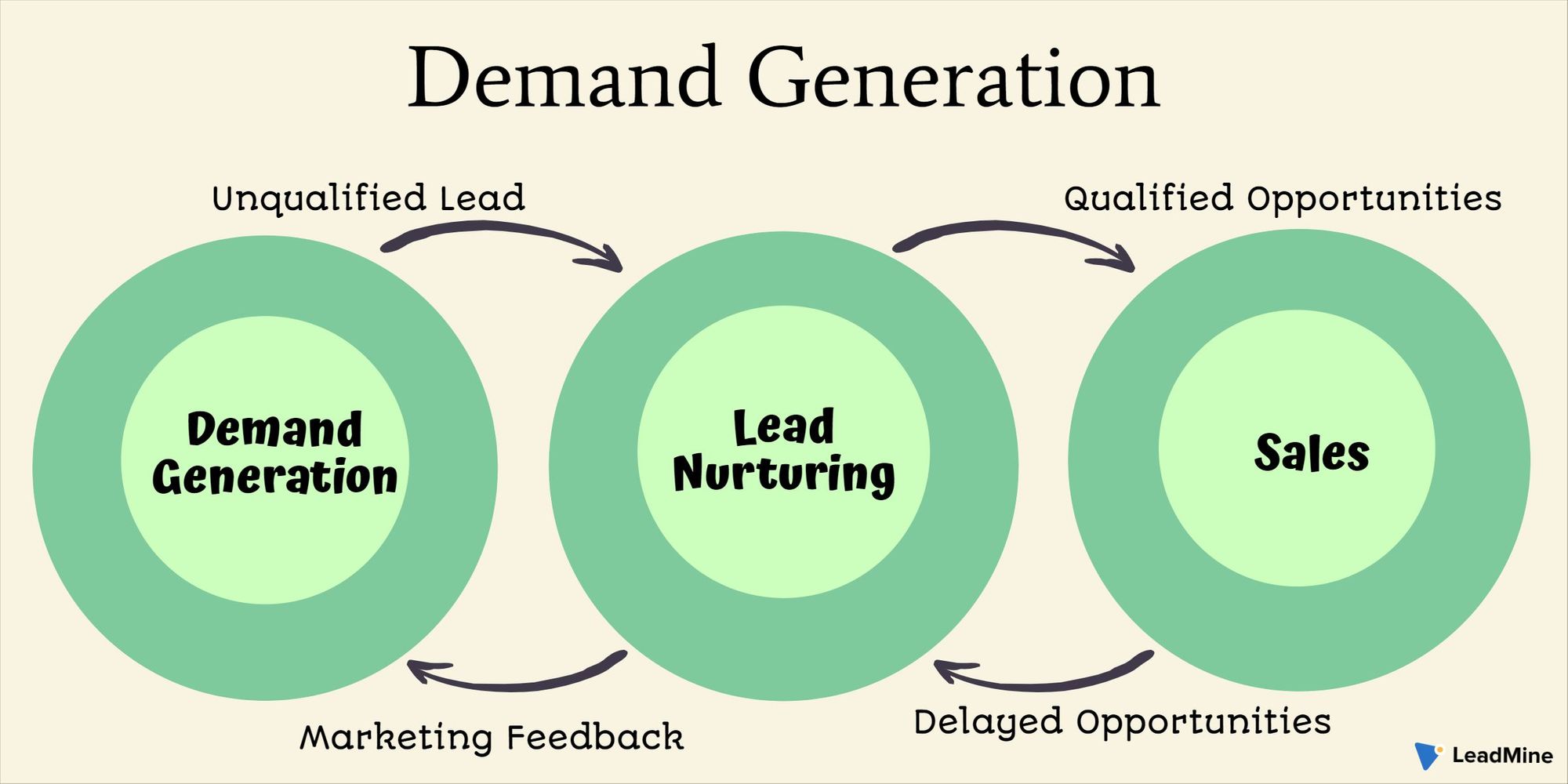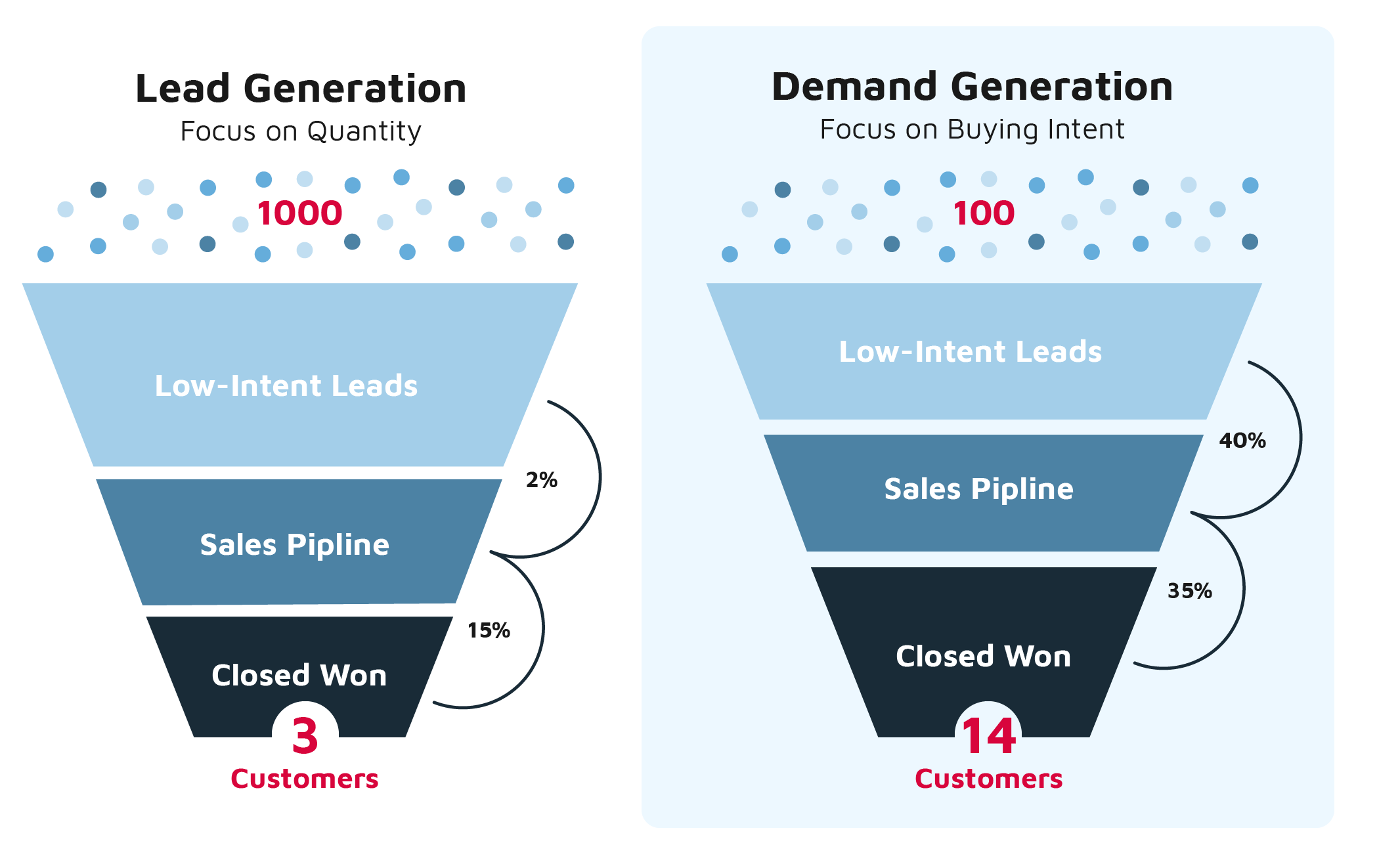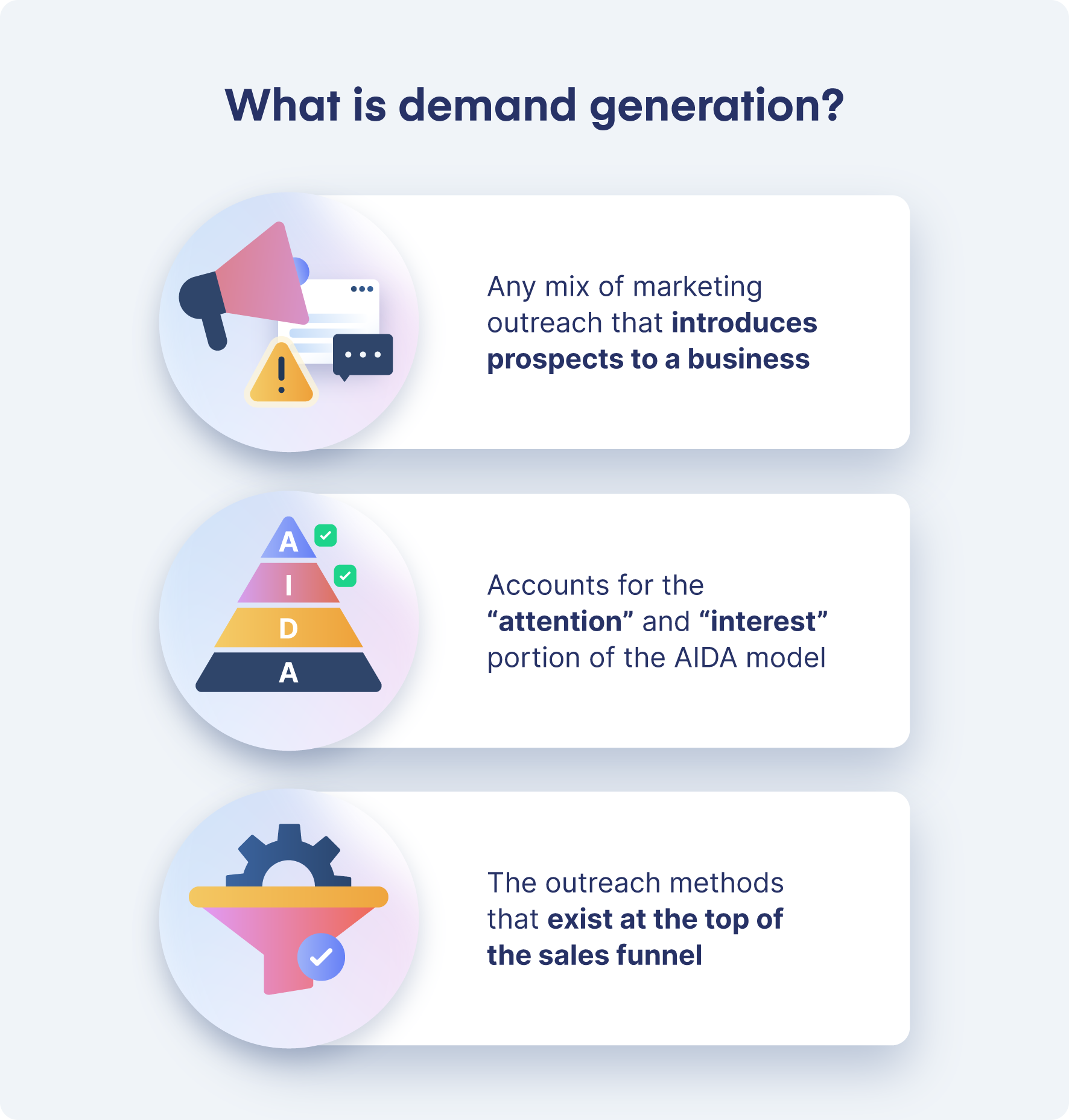Unlocking Growth: What Exactly Is Demand Generation?
In the dynamic landscape of modern business, understanding how to attract and engage potential customers is paramount. When it comes to helping your customers understand your brand, you’re likely going to run into the term “demand generation.” This isn't just another marketing buzzword; it's a foundational approach that underpins sustainable growth for businesses of all sizes. Simply put, a demand generation strategy is used to increase the overall market's awareness and desire for your offerings, setting the stage for future sales.
Far from a simple advertising campaign, demand generation is a holistic, long-term strategy designed to create and nurture interest in your products or services before a direct sales pitch even enters the picture. It's about building a relationship with your audience, positioning your brand as a trusted authority, and ensuring that when a need arises, your solution is top of mind. This comprehensive approach is critical because, as the adage goes, you can’t sell something to someone you don’t know exists yet, and they can’t buy anything from a company they’ve never heard of. This article will delve deep into what demand generation truly entails, its core components, and why it's indispensable for your business's future.
Table of Contents
- What is Demand Generation? The Core Definition
- Why Demand Generation Matters: Beyond Traditional Marketing
- Key Components of a Robust Demand Generation Strategy
- The Demand Generation Funnel: A Holistic View
- Measuring Success: Key Metrics in Demand Generation
- Common Pitfalls to Avoid in Demand Generation
- Integrating Demand Generation with Sales: A Synergistic Approach
- The Future of Demand Generation: Evolving Strategies
- Conclusion
What is Demand Generation? The Core Definition
At its heart, to define demand generation is to understand a comprehensive marketing strategy focused on creating awareness and interest in a company's products or services. In B2B marketing, demand generation is the process of increasing awareness and demand for your product or service, moving beyond mere lead capture to cultivating a genuine desire within your target market. It’s about making your ideal customers aware that a solution to their problem exists, and that your brand is the definitive provider of that solution.
- Movierulzvc
- Hdhub4u Movie Download In Hindi
- 23 Movie 2025 Movierulz
- Sankranthiki Vasthunam Movie Download
- Movierulz Telugu 2024
Unlike traditional marketing practices, which often focus on immediate sales or lead conversion, demand generation marketing (or “demand gen,” for short) plays a longer game. It spans the entire buyer's journey, from the initial spark of awareness to the moment a prospect is ready to engage with a sales team. The goal is to expand your audience, build authority, and generate interest in a way that naturally pulls prospects towards your brand. This holistic approach ensures that by the time a prospect is ready to buy, they are already familiar with your brand, trust your expertise, and view you as a credible solution provider. Demand generation refers to the process of creating brand awareness and increasing conversions by expanding brand reach within the target audience, making it a critical strategic imperative for any growth-oriented business.
Why Demand Generation Matters: Beyond Traditional Marketing
In today's hyper-connected world, buyers are more informed and self-sufficient than ever before. They conduct extensive research online, consult peers, and evaluate solutions long before ever speaking to a sales representative. This shift in buyer behavior makes traditional, outbound-heavy marketing less effective on its own. This is precisely where understanding how to define demand generation becomes crucial.
Demand generation fills this gap by focusing on the 'pull' rather than the 'push.' Instead of interrupting prospects with sales messages, it aims to attract them by providing immense value. This approach builds a foundation of trust and credibility, which is invaluable in a competitive market. A strong demand generation strategy leads to:
- New South Movie Hindi Dubbed 2025
- Ullu Website
- Movierulz Kannada New Movie 2025
- 5 Movierulz 2025
- Ullu Bhabhi
- Higher Quality Leads: Prospects who are already aware of your brand and have engaged with your valuable content are more likely to be qualified and genuinely interested in your offerings.
- Increased Brand Authority: By consistently providing insightful content and solutions, your brand establishes itself as a thought leader in its industry.
- Shorter Sales Cycles: When prospects are pre-educated and pre-disposed to your brand, the sales process becomes smoother and faster.
- Sustainable Growth: Demand generation creates a continuous pipeline of interested prospects, fostering long-term business health rather than relying on sporadic campaigns.
- Enhanced Customer Lifetime Value (CLTV): Customers acquired through a nurturing demand gen process often have a deeper understanding and appreciation for your brand, leading to higher retention and loyalty.
Essentially, demand generation shifts the focus from simply generating leads to generating *qualified opportunities* by cultivating a receptive and informed audience. This strategic foresight is what truly differentiates it from more tactical, short-term marketing efforts.
Key Components of a Robust Demand Generation Strategy
A successful demand generation strategy is not a single tactic but a symphony of integrated efforts. It involves creating and distributing valuable content and experiences that appeal to the target audience. These components work in harmony to attract, engage, and nurture prospects throughout their journey.
Content Marketing: The Bedrock of Demand Gen
Content is the fuel that powers demand generation. It's how you educate your audience, address their pain points, and showcase your expertise without being overtly salesy. This can include blog posts, infographics, case studies, webinars, social media updates, whitepapers, e-books, and interactive tools. The key is to create content that is relevant, valuable, and aligns with the different stages of the buyer's journey.
- Awareness Stage: Blog posts, infographics, social media updates, short videos addressing common problems.
- Consideration Stage: Whitepapers, e-books, webinars, comparison guides, expert interviews, podcasts.
- Decision Stage: Case studies, testimonials, product demos, free trials, detailed solution briefs.
The effectiveness of your content hinges on understanding your target audience's needs, questions, and challenges. By consistently providing answers and insights, you build trust and position your brand as a go-to resource.
SEO and Paid Media: Amplifying Your Reach
Even the best content won't generate demand if no one sees it. This is where Search Engine Optimization (SEO) and Paid Media come into play.
- SEO: Optimizing your website and content for search engines ensures that when your target audience searches for solutions to their problems, your brand appears prominently. This organic visibility is a cornerstone of long-term demand generation, driving consistent, high-quality traffic.
- Paid Media (PPC, Social Ads, Display Ads): Paid channels allow for precise targeting, enabling you to reach specific demographics, industries, or even individuals who have shown interest in similar topics. These campaigns can drive immediate traffic to your valuable content, accelerating the demand generation process. Platforms like Google Ads, LinkedIn Ads, and Facebook Ads offer sophisticated targeting capabilities crucial for reaching your ideal customer profile.
A balanced approach, combining the long-term benefits of SEO with the immediate impact of paid media, is often the most effective way to amplify your demand generation efforts.
Email Marketing: Nurturing Relationships
Once you've captured a prospect's attention, email marketing becomes indispensable for nurturing that interest. It allows for personalized communication, delivering relevant content directly to their inbox. Effective email marketing for demand generation involves:
- Segmentation: Dividing your audience based on interests, demographics, or engagement levels to send highly relevant content.
- Automation: Setting up automated email sequences (drip campaigns) that deliver a series of valuable content pieces over time, guiding prospects through the buyer's journey.
- Personalization: Using prospect data to tailor email content, subject lines, and calls to action.
Email nurturing builds rapport, keeps your brand top-of-mind, and gently nudges prospects closer to a sales-ready state without being overtly pushy.
Webinars and Events: Engaging in Real-Time
Webinars, virtual summits, and in-person events offer unique opportunities for deeper engagement and interaction. They allow you to:
- Showcase Expertise: Present complex topics, offer live Q&A, and demonstrate your team's knowledge.
- Generate High-Quality Leads: Attendees of webinars and events are often highly interested in the topic, making them valuable prospects.
- Build Community: Foster a sense of connection among your audience and with your brand.
These interactive formats are excellent for moving prospects from the consideration stage to the decision stage, providing a more immersive experience than static content.
The Demand Generation Funnel: A Holistic View
While often depicted as a linear funnel, the buyer's journey in demand generation is more cyclical and iterative. However, conceptualizing it as a funnel helps in understanding the different stages and the types of content and engagement strategies required for each.
- Top of the Funnel (ToFu) - Awareness: At this stage, prospects are just discovering they have a problem or a need. The goal is to capture their attention and introduce your brand as a potential resource. Content here is broad, educational, and problem-focused (e.g., blog posts, social media, infographics). This is where you truly define demand generation's initial impact.
- Middle of the Funnel (MoFu) - Consideration: Prospects are now aware of their problem and are actively researching solutions. They are evaluating different approaches and providers. Content here is more specific, solution-oriented, and positions your brand as a viable option (e.g., whitepapers, webinars, case studies).
- Bottom of the Funnel (BoFu) - Decision: At this stage, prospects are ready to make a purchasing decision. They are comparing specific vendors and looking for reasons to choose one over another. Content here is highly specific, persuasive, and designed to close the deal (e.g., demos, free trials, testimonials, pricing guides).
The beauty of a well-executed demand generation strategy is that it seamlessly guides prospects through these stages, ensuring they receive the right information at the right time, building trust and readiness for a sales conversation.
Measuring Success: Key Metrics in Demand Generation
To ensure your demand generation efforts are yielding results, it's crucial to track relevant metrics. These metrics help you optimize your strategy, justify your investments, and demonstrate ROI. Key performance indicators (KPIs) for demand generation include:
- Website Traffic: Overall visitors, unique visitors, and traffic sources (organic, paid, referral).
- Content Engagement: Time on page, bounce rate, downloads of gated content (e.g., whitepapers, e-books), video views, social shares.
- Lead Volume & Quality: The number of leads generated and, more importantly, their qualification level (e.g., Marketing Qualified Leads - MQLs, Sales Qualified Leads - SQLs).
- Conversion Rates: From website visitor to lead, from lead to MQL, from MQL to SQL, and ultimately, from SQL to customer.
- Cost Per Lead (CPL): The total cost of your demand generation efforts divided by the number of leads generated.
- Return on Investment (ROI): The revenue generated from demand generation efforts compared to the cost.
- Pipeline Velocity: How quickly leads move through the sales funnel.
- Customer Acquisition Cost (CAC): The total sales and marketing cost to acquire a new customer.
Regularly analyzing these metrics allows you to identify what's working, what's not, and where to allocate your resources for maximum impact. Tools like Google Analytics, CRM systems (e.g., Salesforce, HubSpot), and marketing automation platforms are invaluable for tracking and reporting on these KPIs.
Common Pitfalls to Avoid in Demand Generation
While the concept of demand generation is powerful, its execution can be complex. Businesses often stumble into common pitfalls that hinder their success. Being aware of these can help you navigate your strategy more effectively:
- Focusing Solely on Lead Quantity Over Quality: A common mistake is to prioritize generating a high volume of leads without assessing their fit or readiness. A large number of unqualified leads can overwhelm sales teams and waste resources. The true power of demand generation lies in attracting *interested and relevant* prospects.
- Ignoring the Full Buyer's Journey: Some companies focus too heavily on the top of the funnel (awareness) and neglect the crucial nurturing stages. Demand generation spans the entire buyer journey, meaning consistent, valuable engagement is needed from initial interest to conversion.
- Lack of Alignment Between Marketing and Sales: For demand generation to succeed, marketing and sales teams must be in lockstep. Misalignment on lead definitions, hand-off processes, and shared goals can lead to friction and lost opportunities.
- Underestimating the Importance of Content Quality: In an era of content saturation, generic or low-quality content will not cut through the noise. Your content must be insightful, unique, and genuinely valuable to your target audience to build authority and trust.
- Failing to Measure and Optimize: Launching campaigns without robust tracking and analysis is like flying blind. Without measuring KPIs, you cannot identify what's working, what needs improvement, or how to optimize your spend.
- Short-Term Thinking: Demand generation is a long-term investment. Expecting immediate, dramatic results can lead to premature abandonment of strategies that need time to mature and show their full potential.
Avoiding these pitfalls requires a strategic mindset, continuous optimization, and a deep understanding of your audience and the market.
Integrating Demand Generation with Sales: A Synergistic Approach
The success of demand generation hinges on seamless integration with the sales team. Marketing creates the demand, but sales closes the deal. This synergy is often referred to as "Smarketing" – the alignment of sales and marketing goals and processes.
Key aspects of this integration include:
- Shared Goals and KPIs: Both teams should work towards common revenue goals, with shared metrics for lead quality, conversion rates, and pipeline contribution.
- Service Level Agreements (SLAs): Formal agreements defining what constitutes a "qualified lead" from marketing's perspective and the expected follow-up time from sales.
- Regular Communication: Consistent meetings and feedback loops between marketing and sales to discuss lead quality, campaign effectiveness, and market insights. Marketing needs to know which leads are converting and why, and sales needs to understand the context of the leads they receive.
- CRM and Marketing Automation Integration: Using integrated platforms allows for a unified view of the customer journey, from initial engagement to closed-won deals. This ensures lead scoring is accurate and hand-offs are smooth.
- Sales Enablement Content: Marketing should provide sales with the tools and content they need to effectively engage with demand-generated leads (e.g., battle cards, case studies, product sheets).
When marketing and sales operate as a cohesive unit, the entire customer acquisition process becomes more efficient, leading to higher conversion rates and greater revenue.
The Future of Demand Generation: Evolving Strategies
Demand generation is not static; it's constantly evolving with technological advancements and shifts in buyer behavior. Looking ahead, several trends are shaping its future:
- Hyper-Personalization and AI: Leveraging AI and machine learning to deliver highly personalized content and experiences at scale. This goes beyond basic personalization to anticipate needs and preferences.
- Account-Based Marketing (ABM): A highly targeted approach where marketing and sales focus resources on a defined set of high-value accounts. ABM is essentially demand generation on an account-specific level, creating tailored campaigns for specific companies.
- Emphasis on Customer Experience (CX): The entire buyer's journey, from initial touchpoint to post-purchase, will become even more critical. A seamless, positive experience at every stage fosters loyalty and advocacy, which in turn generates more demand.
- Interactive Content: Quizzes, calculators, polls, and interactive infographics will become more prevalent, offering engaging ways to capture data and provide value.
- Video and Audio Content: The rise of platforms like TikTok, podcasts, and short-form video means marketers must adapt their content strategies to meet audience preferences for these formats.
- Data Privacy and Trust: With increasing regulations and consumer awareness, building trust through transparent data practices will be paramount. Ethical data use will become a competitive differentiator in demand generation.
To remain effective, businesses must continuously adapt their demand generation strategies, embracing new technologies and methodologies while staying true to the core principle of providing immense value to their target audience.
Conclusion
In an increasingly competitive digital landscape, the ability to effectively define demand generation and implement a robust strategy is no longer a luxury but a necessity for sustainable business growth. It moves beyond the tactical pursuit of leads to the strategic cultivation of an informed, engaged, and receptive audience. By focusing on creating awareness, building authority, and nurturing interest throughout the entire buyer's journey, businesses can ensure a continuous pipeline of qualified prospects ready to engage.
From crafting compelling content to leveraging advanced analytics and fostering seamless sales-marketing alignment, every component plays a vital role. Embracing demand generation means investing in a long-term approach that builds trust, positions your brand as a leader, and ultimately drives predictable revenue. If you're looking to elevate your marketing efforts and secure a future of consistent growth, understanding and implementing a comprehensive demand generation strategy is your clearest path forward.
What are your biggest challenges in generating demand for your business? Share your thoughts in the comments below, or explore our other articles on B2B marketing strategies to deepen your understanding of this critical field.



Detail Author:
- Name : Miss Monique O'Hara V
- Username : larkin.dexter
- Email : maybelle16@runte.com
- Birthdate : 1996-05-27
- Address : 68941 Cory Mission East Wilsonberg, ID 29861
- Phone : 1-769-294-9888
- Company : Zulauf, Franecki and Renner
- Job : Mechanical Door Repairer
- Bio : Veritatis quia rerum et. Velit voluptatem cumque commodi. Illo aut minus ad autem velit officia. Rem labore qui similique.
Socials
twitter:
- url : https://twitter.com/aimee_official
- username : aimee_official
- bio : Ab voluptas perspiciatis reiciendis eaque qui. Eos quo est sit consequuntur eos fuga quod. Aut libero voluptatem harum qui molestias.
- followers : 967
- following : 2285
instagram:
- url : https://instagram.com/aimeebarrows
- username : aimeebarrows
- bio : Aut consectetur rerum quo nisi laborum laborum. Dicta consequuntur et quos qui quis.
- followers : 1953
- following : 792
facebook:
- url : https://facebook.com/barrows1989
- username : barrows1989
- bio : Neque consectetur explicabo autem. Ut iusto officiis atque dolores.
- followers : 1719
- following : 1900